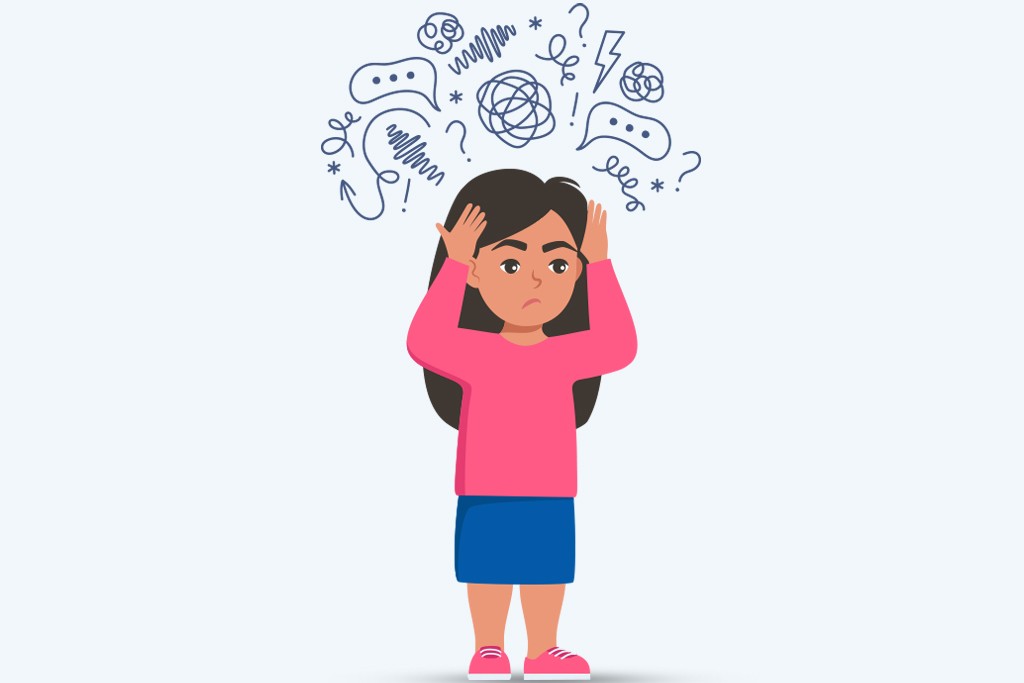ADHD: A Gift and a Challenge
ADHD: A Gift and a Challenge
Attention-deficit hyperactivity disorder (ADHD) is a neurodevelopmental disorder. Children with ADHD may have trouble paying attention, controlling impulsive behaviors (may act without thinking about what the result will be), or be overly active.
You may notice the following SIGNS AND SYMPTOMS:
- Impulsivity
- Lack of focus
- Disorganization
- Self-focused behavior
- Fidgeting
- Heightened emotionality
- Fear of rejection
- Daydreaming
- Impulsivity
- Difficulty following a conversation
- Procrastination
- Trouble working quietly
- Always “on the go”
- Trouble reading social cues
- Trouble compromising with others
- Personal hygiene issues
- Difficulty following directions

Difference between ADHD and ADD:
ADHD has three different types: inattentive type, hyperactive/impulsive type, and combined type. Technically speaking, ADD is actually inattentive ADHD—which means the disorder manifests as a limited attention span, forgetfulness, or distractibility, without hyperactivity (fidgeting or constant movement). Therefore, the occurrence of hyperactivity differentiates between cases of what would be ADD and ADHD.
“We call all attention-deficit disorders ADHD,” Dr. Adler said; but we don’t call all ADHD cases ADD.
The following are the CAUSES of it:
Factors that may be involved in the development of ADHD include genetics, environment or problems with the central nervous system/head injury.
Risk factors for ADHD may include:
- Blood relatives, such as a parent or sibling, with ADHD or another mental health disorder.
- Exposure to environmental toxins — such as lead.
- Maternal drug use, alcohol use or smoking during pregnancy.
- Premature birth.
This is how the DIAGNOSIS is done:
Diagnosis involves gathering information from parents, teachers and family members, filling out checklists, and undergoing a medical evaluation (including vision and hearing screening) to rule out possible medical issues and differential diagnoses.
WAYS TO HELP A CHILD WITH ADHD:
- – Be patient with their struggles. Harsh reminders aren’t helpful.
- – Create a daily structure for sleep, including wind-down time, bedtime, and wake-up time.
- – Use a calendar to help them organize their schedule.
- – Organize the house so there’s a dedicated landing zone for frequently used items, such as keys.
- – Help them organize their space, including rooms, desk, and backpack.
- – Be specific when giving instructions, and provide directions one at a time.
- – Set up reminders, or help them set up their own reminders for important tasks.
- – Help them break down complicated tasks into manageable pieces.
- – Provide academic support through homework buddies or tutors.
- – Set up a chore chart to help them keep track of tasks.
- – Get to know their friends.
- – Encourage conversation about relationships, sexuality, and drug use.
- – Make room for them to vent frustration without repercussion.
- – Help them understand the dangers of distracted driving and drug use.
- – Make it clear that coming to you for help is the mature and responsible thing to do.
- – Don’t scold or punish them for things they can’t control.
- – They’re on their way to adulthood, so let them have a say in things that affect their health and well-being.
- – Praise all small progress
WHAT CAN YOU DO TO HELP YOUR CHILD? :
- Work with your child on goals for home, school, friendship and activities like sport.
- Involve your child in making family rules. This can help your child feel heard and valued.
- Work with your child on consequences for breaking family rules.
- Praise your child for attempts at independence.
- Encourage your child to try an extracurricular social group or activity like a team sport, gaming group, martial arts or drama class.
- Help your child to recognise strong emotions and calm down.
TREATMENT involves:
- Therapy can help you learn ways to improve your attention, deal with distractions, cope with feelings, and get along better with others.
- A combination of medication, behavior therapy, and family-management training can be beneficial.
- Therapists teach Mindfulness that improves attention.
- For many people, putting on eyeglasses helps them focus their eyes. In the same way, ADHD medication helps people with ADHD focus their thoughts. The medications help them ignore distractions, pay attention and control their behavior.

SIDE – EFFECTS of medications include:
- – Decreased appetite
- – Weight loss
- – Trouble sleeping
- – Anxiety
- – Minor growth delay
- – Upset stomach
- – Changes in blood pressure and heart rate
- – Short period of Fatigue, increased activity or bad mood


